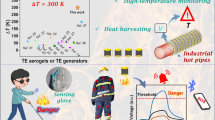Abstract
The National Physical Laboratory (NPL) has developed a new variation on the established guarded hot plate technique for steady-state measurements of thermal conductivity. This new guarded hot plate has been specifically designed for making measurements on specimens with a thickness that is practical for advanced industrial composite materials and applications. During the development of this new guarded hot plate, NPL carried out an experimental investigation into methods for minimising the thermal contact resistance between the test specimen and the plates of the apparatus. This experimental investigation included tests on different thermal interface materials for use in another NPL facility based on a commercial guarded heat flow meter apparatus conforming to standard ASTM E1530-11. The results show the effect of applying different quantities of the type of heat transfer compound suggested in ASTM E1530-11 (clause 10.7.3) and also the effect on thermal resistance of alternative types of thermal interface products. The optimum quantities of two silicone greases were determined, and a silicone grease filled with copper was found to offer the best combination of repeatability, small hysteresis effect and a low thermal contact resistance. However, two products based on a textured indium foil and pyrolytic graphite sheet were found to offer similar or better reductions in thermal contact resistance, but with quicker, easier application and the advantages of protecting the apparatus plates from damage and being useable with specimen materials that would otherwise absorb silicone grease.


Similar content being viewed by others
References
C. Stacey, R.G. Williams, in Proceedings of Twenty Fourth International Thermal Conductivity Conference (Technomic Publishing Company Inc, 1999), pp. 755–763
C. Stacey, Insulation Materials: Testing and Applications, ASTM STP 1426, vol. 4, pp. 131–144 (2002)
ISO 8302, International Standard: Determination of Steady-State Thermal Resistance and Related Properties—Guarded Hot Plate Apparatus (ISO, Geneva, 1991)
ASTM E1530, Standard Method for Evaluating the Resistance to Thermal Transmission of Materials by the Guarded Heat Flow Meter Technique (ASTM, West Conshohocken, PA, 2011)
I. Williams, R.E. Shawyer, Certification Report for a Pyrex Glass Reference Material for Thermal Conductivity Between \(-75\,^{\circ }{\rm C}\) and \(195\,^{\circ }{\rm C}\)—CRM 039 (Commission of the European Communities, Luxembourg, 1991)
D.R. Salmon, G. Roebben, A. Lamberty, R. Brandt, Certification of Thermal Conductivity and Thermal Diffusivity up to 1025 K of a Glass-Ceramic Reference Material—BCR-724 (European Commission, Institute for Reference Materials and Measurements, Brussels, 2007)
Acknowledgments
This work was funded through the European Metrology Research Programme (EMRP) Project SIB 52 ‘Metrology for Thermal Protection Materials’. The EMRP is jointly funded by the EMRP participating countries within EURAMET and the European Union.
Author information
Authors and Affiliations
Corresponding author
Rights and permissions
About this article
Cite this article
Stacey, C., Simpkin, A.J. & Jarrett, R.N. Techniques for Reducing Thermal Contact Resistance in Steady-State Thermal Conductivity Measurements on Polymer Composites. Int J Thermophys 37, 107 (2016). https://doi.org/10.1007/s10765-016-2119-0
Received:
Accepted:
Published:
DOI: https://doi.org/10.1007/s10765-016-2119-0




